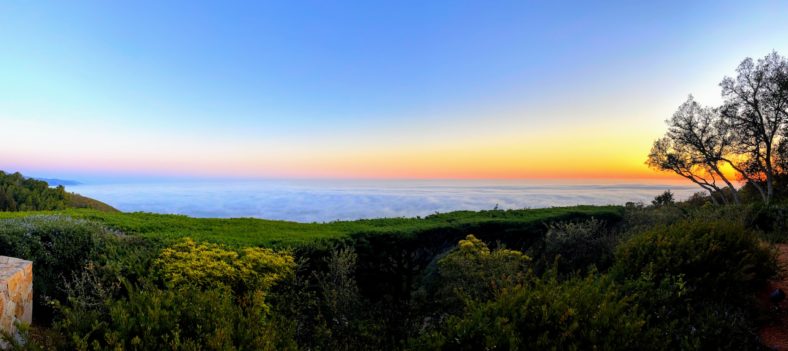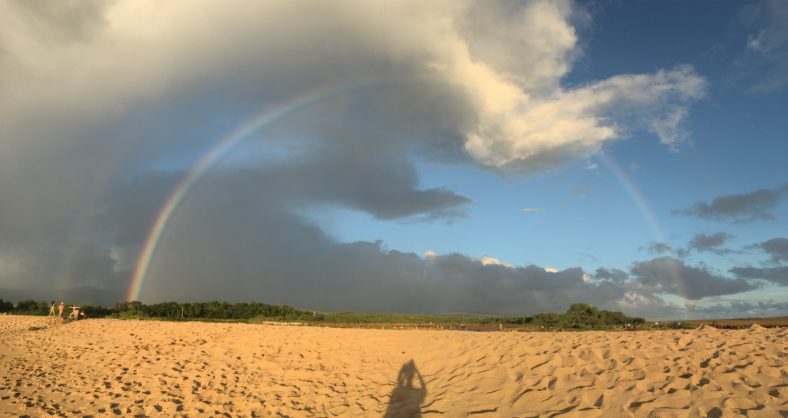Detailed review of Ventana Big Sur, pro tips for your stay, and suggestions for what to do around the area and along the beautiful Pacific coastline. Click the title to read more.
Categorynature
ontribute to offsetting 25 HAN-YVR round-trips here:
https://www.gofundme.com/dem-flyers-cx-mistake-fare
Before I go on, let me share with you exactly what I’m looking at right now:
How did we get to stay at such an amazing property as the Intercontinental (IC) Fiji with such an amazing view? On points, of course. 30,000 IHG points per night, to be exact. Given that rooms start at around $350/night, it’s a pretty ludicrous award redemption (you can typically expect to get around 0.6-0.8 cents per point), although as I explained a few weeks ago, you should never be paying more than $210 for a hotel of this category.
That said, this hotel and in general, Fiji (and other island/resort-based destinations) are not without a glaring flaw. You are entirely resort-captive.
What do I mean by that? Basically, it’s very difficult to do anything without shelling out a hefty chunk of change because there is nowhere else for you to go (unless you happen to have a car). Resorts have wide ranges of activities, some of which are free, but as a rule of thumb, the nicer the hotel, the fewer the free activities and the more the paid ones will cost. To put it in perspective, the resort we stayed at two nights ago, the Naviti Resort, offered kayaks, snorkeling gear, and paddleboards for free, whereas the IC Fiji charges anywhere from 10-30 USD for the privilege of renting them for a few hours.
On top of that, meals are obscenely expensive (anything that could remotely be considered a main course started at 20 USD), and the one place you can buy food on the property doesn’t stock any food other than chips and ice cream.
The travel hackers that we are, we were not going to stand for this, so we got a bit creative. At Naviti, where our breakfast was included, we went on the later side of it, had our meals, and made sandwiches that we brought back to our rooms to eat for lunch. Here at the IC, for the first night, we snagged some pizza at the end of lunch hours (before prices increased for dinner) and then shared it later. In general, if you can get yourselves on a two meal schedule, you can save some serious change.
Activities-wise, we loaded up on every single free activity the IC offered, from an introductory scuba diving lesson in a special dive pool, to, a yoga class, to evening music performances and fire shows. We checked out neighboring hotels (which were nowhere near within walking distance, but just a $10 cab ride away) and perused their event and meal offerings and partook when they were appealing.
Basically, we thought outside the box (well, resort). Even better then, when Esther and I stumbled on a set of local villagers who had set up shop not too far from the resort to offer massages, tours and sundries “at local prices.” I’m sure they weren’t exactly what a local would pay, but when we found out it would only cost 10 USD for a specially-prepared four-person lunch, you can be damn sure we asked them to bring us some food. On top of it all, it was really nice to talk and get to know the locals, because resorts can be isolating (personally, they drive me insane, but that’s probably just because I can’t sit still 😉 ), and we came all this way for more than just the scenery.
Long story short — just because you’re at an expensive resort doesn’t mean you can’t have a trip that doesn’t break the bank.
Happy travels!
After jumping on a mistake fare to Indonesia in the spring (and convincing my friend Jacob to join), I finally got to live out my trip, spending five days in Bali followed by one in Singapore and another in Tokyo.
We spent a large portion of our Bali segment staying in Ubud, from which we had access to much of northern Bali (like Mt. Batur, an active volcano, shown above) as well as respite from the hordes of tourists typically crowding the beaches of Kuta (we did of course spend a day in Legian to take advantage of the beaches).
On the third day of our stay, we followed the advice of the (wonderful!) hotel manager at the Gajah Biru Bungalows and walked into Ubud city center searching for ‘push bikes’ (not to be confused with normal ‘bikes’, which is how the locals refer to motorcycles) to rent.
After walking down a side street we stumbled on a vendor and asked how much it would cost to rent bikes for the day. He told us 25,000 rupees (a bit less than $2) per bike.
“25,000?!” I asked, feigning outrage, “That’s ridiculous!” (The hotel manager told us to expect 15,000 as a fair price). I turned to walk away.
“Fine. 20,000”, he acquiesced.
I gave the man an uninterested glance and then continued down the street.
After proceeding about five minutes without passing another vendor, Jacob turned to me and pointed out, “You realize that you turned down an offer for a full day bike rental of $3, right?”
“That’s not the point. We have to get a good deal!” I retorted.
We then started laughing and turned back down the street.
At the end of the day, during which we biked about 15km, we navigated our way back through rush hour traffic and returned to the vendor from whom we had rented.
“The bikes were good?” he asked.
“Yes, very.”
As we walked away I remarked that the price of the bike rentals — barely $3 — was by far the best purchase of the whole trip. They had carried us 15km in and around Ubud, through expanses of farmland, dozens of local temples, and finally, to the terraced rice fields at Tegalalang.
Jacob agreed.
Feeling reminiscent, I then posed the logical extension to what was originally meant as a rhetorical question — for each of the trips we had taken since the start of the year, what was the best money we had spent? I’ll clarify here that we settled on the term ‘best money’ to mean the greatest ratio of enjoyment to amount spent, with free things being excepted.
Here were my answers:
Check out the video for stunning dashcam footage during a sunset drive!
© 2024 DEM Flyers
Theme by Anders Norén — Up ↑


